Produce Low Aromatic Contents with Enhanced Cold Properties of Hydrotreated Renewable Diesel Using Pt/Alumina-Beta-Zeolite: Reaction Path Studied via Monoaromatic Model Compound
Abstract
:1. Introduction
2. Materials and Methods
2.1. Feed Material
2.2. Zeolite Precursor
2.3. Zeolite Extrusion
2.4. Experimental Procedure
2.5. Analytical Study
3. Results and Discussion
3.1. Catalyst Characterization
3.2. Hydro-Isomerisation of n-Hexadecane in ULSD
3.3. n-Hexadecane Isomerisation
3.4. Toluene Dearomatisation
4. Conclusions
Author Contributions
Funding
Conflicts of Interest
References
- Reaume, S.J.; Ellis, N. Use of isomerization and hydroisomerization reactions to improve the cold flow properties of vegetable oil-based biodiesel. Energies 2013, 6, 619–633. [Google Scholar] [CrossRef]
- Palanisamy, S.; Gevert, B.S. Hydroprocessing of fatty acid methylester containing resin acids blended with gas oil. Fuel Process. Technol. 2014, 126, 435–440. [Google Scholar] [CrossRef]
- Liu, C.Y.; Hao, Y.A.N.G.; Jing, Z.Y.; Xi, K.Z.; Qiao, C.Z. Hydrodeoxygenation of fatty acid methyl esters and isomerization of products over NiP/SAPO-11 catalysts. J. Fuel Chem. Technol. 2016, 44, 1211–1216. [Google Scholar] [CrossRef]
- Labeckas, G.; Slavinskas, S. Combustion phenomenon, performance and emissions of a diesel engine with aviation turbine JP-8 fuel and rapeseed biodiesel blends. Energy Convers. Manag. 2015, 105, 216–229. [Google Scholar] [CrossRef]
- Kassem, Y.; Camur, H. A laboratory study of the effects of wide range temperature on the properties of biodiesel produced from various waste vegetable oils. Waste Biomass Valoriz. 2017, 8, 1995–2007. [Google Scholar] [CrossRef]
- Radlik, M.; Małolepszy, A.; Matus, K. Alkane isomerization on highly reduced Pd/Al2O3 catalysts. The crucial role of Pd-Al species. Catal. Commun. 2019, 123, 17–22. [Google Scholar] [CrossRef]
- Hancsok, J.; Kovacs, S.; Polczmann, G.; Kasz, T. Investigation the effect of oxygenic compounds on the isomerization of bioparaffins over Pt/SAPO-11. Top. Catal. 2011, 54, 1094–1101. [Google Scholar] [CrossRef]
- Zhang, Z.; Pittman, C.U.; Sui, J.S.; Sunand, J.; Wang, Q. Catalytic upgrading of bio-oil by reacting with olefins and alcohols over solid acids: Reaction paths via model compound studies. Energies 2013, 6, 1568–1589. [Google Scholar] [CrossRef]
- Gomes, L.C.; Rosas, D.D.O.; Chistone, R.C.; Zotin, F.M.Z.; de Araujo, L.R.R.; Zotin, J.L. Hydroisomerization of n-hexadecane using Pt/alumina-Beta zeolite catalysts for producing renewable diesel with low pour point. Fuel 2017, 209, 521–528. [Google Scholar] [CrossRef]
- Gläser, R.; Gomm, S.; Weitkamp, J. In situ investigation of cumene synthesis over dealuminated zeolite catalysts by means of a tapered element oscillating microbalance. In Studies in Surface Science and Catalysis; Elsevier: Amsterdam, The Netherlands, 2004; Volume 154, pp. 2125–2132. [Google Scholar]
- Aboul-Gheit, A.K.; Awadallah, A.E.; Aboul-Gheit, N.A.K.; Solyman, E.A.; Abdel-Aaty, M.A. Effect of hydrochlorination and hydrofluorination of Pt/H-ZSM-5 and Pt–Ir/H-ZSM-5 catalysts for n-hexane hydroconversion. Appl. Catal. A Gen. 2008, 334, 304–310. [Google Scholar] [CrossRef]
- Aboul-Gheit, N.A.K. Effect of hydrohalogenation of metal/zeolite catalysts for cyclohexene hydroconversion- Part 3- Pd/H-ZSM-5 catalysts. J. Chin. Chem. Soc. 2007, 54, 1211–1222. [Google Scholar] [CrossRef]
- Sidhpuria, K.B.; Parikh, P.A.; Bahadur, P.; Jasra, R.V. Rhodium supported Hβ zeolite for the hydrogenation of toluene. Ind. Eng. Chem. Res. 2008, 47, 4034–4042. [Google Scholar] [CrossRef]
- Cui, S.; Wang, G.; Yang, Y.; Liu, B. Influence of Si/Al molar ratio on the hydrogenation, isomerization and ring opening of naphthalene over silica-alumina supported Ni2P catalyst. Fuel 2018, 225, 10–17. [Google Scholar] [CrossRef]
- Fan, Y.; Bao, X.; Shi, G.; Wei, W.; Xu, J. Olefin reduction of FCC gasoline via hydroisomerization aromatisation over modified HMOR/HZSM-5/H-beta composite carriers. Appl. Catal. A Gen. 2004, 275, 61–71. [Google Scholar] [CrossRef]
- Tian, S.; Chen, J. Hydroisomerization of n-dodecane on a new kind of bifunctional catalyst: Nickel phosphide supported on SAPO-11 molecular sieve. Fuel Process. Technol. 2014, 122, 120–128. [Google Scholar] [CrossRef]
- Park, K.C.; Ihm, S.K. Hydroisomerization of n-tetradecane over Pt/SAPO-11 catalyst. Appl. Catal. A Gen. 2000, 203, 201–209. [Google Scholar] [CrossRef]
- Geng, C.; Zhang, F.; Gao, Z.; Zhao, L.; Zhou, J. Hydroisomerization of n-tetradecane over Pt/SAPO-11 catalyst. Catal. Today 2014, 93–95, 485–491. [Google Scholar] [CrossRef]
- Osman, A.I.; Abu-Dahrieh, J.K.; Rooney, D.W.; Thompson, J.; Halawy, S.A.; Mohamed, M.A. Surface hydrophobicity and acidity effect on alumina catalyst in catalytic methanol dehydration reaction. J. Chem. Technol. Biotechnol. 2017, 92, 2952–2962. [Google Scholar] [CrossRef] [Green Version]
- Kubicka, D.; Kikhtyanin, O. Opportunities for zeolites in biomass upgrading—Lessons from the refining and petrochemical industry. Catal. Today 2015, 243, 10–22. [Google Scholar] [CrossRef]
- Osman, A.I.; Abu-Dahrieh, J.K.; Abdelkader, A.; Hassan, N.M.; Laffir, F.; McLaren, M.; Rooney, D.W. Silver-Modified η-Al2O3 Catalyst for DME Production. J. Phys. Chem. C 2017, 121, 25018–25032. [Google Scholar] [CrossRef]
- Li, X.; Shen, B.; Guo, Q.; Gao, J. Effects of large pore zeolite additions in the catalytic pyrolysis catalyst on the light olefins production. Catal. Today 2007, 125, 270–277. [Google Scholar] [CrossRef]
- Wang, Y.; Tao, Z.; Wu, B.; Xu, J.; Huo, C.; Li, K.; Chen, H.; Yang, Y.; Li, Y. Effect of metal precursors on the performance of Pt/ZSM-22 catalysts for n-hexadecane hydroisomerization. J. Catal. 2015, 22, 1–13. [Google Scholar] [CrossRef]
- Palanisamy, S.; Gevert, B.S. Hydrodeoxygenation of fatty acid methyl ester in gas oil blend-NiMoS/Alumina. Green Process. Synth. 2017, 7, 260–267. [Google Scholar] [CrossRef]
- Palanisamy, S.; Gevert, B.S. Study of non-catalytic thermal decomposition of triglyceride at hydroprocessing condition. Appl. Therm. Eng. 2016, 107, 301–310. [Google Scholar] [CrossRef]
- Song, Y.; Lin, W.; Guo, X.; Dong, L.; Mu, X.; Tian, H.; Wang, L. Aromatization and isomerization of methylcyclohexane over Ni catalysts supported on different supports. Green Energy Environ. 2018, 4, 75–82. [Google Scholar] [CrossRef]
- Ramos, M.J.; Lucas, A.D.; Jiménez, V.; Sánchez, P.; Valverde, J.L. Hydro-isomerization of different refinery naphtha streams by using a beta zeolite catalyst. Fuel Process. Technol. 2008, 89, 721–727. [Google Scholar] [CrossRef]
- Buzetzki, E.; Sidorová, K.; Cvengrošová, Z.; Kaszonyi, A.; Cvengroš, J. The influence of zeolite catalysts on the products of rapeseed oil cracking. Fuel Process. Technol. 2011, 92, 1623–1631. [Google Scholar] [CrossRef]
- Ono, Y.A. Survey of the mechanism in the catalytic isomerisation of alkanes. Catal. Today 2003, 81, 3–16. [Google Scholar] [CrossRef]
- Soualah, A.; Lemberton, J.; Pinard, L.; Chater, M.; Magnoux, P.; Moljord, K. Hydroconversion of n-decane on Pt/HZSM-5 bifunctional catalysts: Effect of the Si/Al ratio of the zeolite on selectivities. React. Kinet. Mech. Catal. 2010, 101, 209–219. [Google Scholar] [CrossRef]
- Saxena, S.K.; Viswanadham, N.; Garg, M.O. Cracking and isomerisation functionalities of bi-metallic zeolites for naphtha value upgradation. Fuel 2013, 107, 432–438. [Google Scholar] [CrossRef]
- Jaroszewska, K.; Masalska, A.; Czycz, D.; Grzechowiak, J. Activity of shaped Pt/AlSBA-15 catalysts in n-hexadecane hydroisomerization. Fuel Process. Technol. 2017, 167, 1–10. [Google Scholar] [CrossRef]
- Ye, G.; Sun, Y.; Guo, Z.; Zhu, K.; Liu, H.; Zhou, X.; Coppens, M.O. Effects of zeolite particle size and internal grain boundaries on Pt/Beta catalyzed isomerization of n-pentane. J. Catal. 2018, 360, 152–159. [Google Scholar] [CrossRef]
- Degnan, J.T.F. Applications of zeolites in petroleum refining. Top. Catal. 2000, 13, 349–356. [Google Scholar] [CrossRef]
- Claude, M.C.; Martens, J.A. Monomethyl-Branching of Long n-Alkanes in the Range from Decane to Tetracosane on Pt/H-ZSM-22 Bi-functional Catalyst. J. Catal. 2000, 190, 39–48. [Google Scholar] [CrossRef]
- Shi, Q.; Gonçalves, J.C.; Ferreira, A.F.P.; Plaza, M.G.; Rodrigues, A.E. Xylene isomerization side reactions over Beta zeolite: Disproportionation and transalkylation of C8 aromatics and toluene. Appl. Catal. A Gen. 2018, 562, 198–205. [Google Scholar] [CrossRef]
- Wang, J.J.; Chuang, Y.Y.; Hsu, H.Y.; Tsai, T.C. Toward industrial catalysis of zeolite for linear alkylbenzene synthesis: A mini-review. Catal. Today 2017, 298, 109–116. [Google Scholar] [CrossRef]
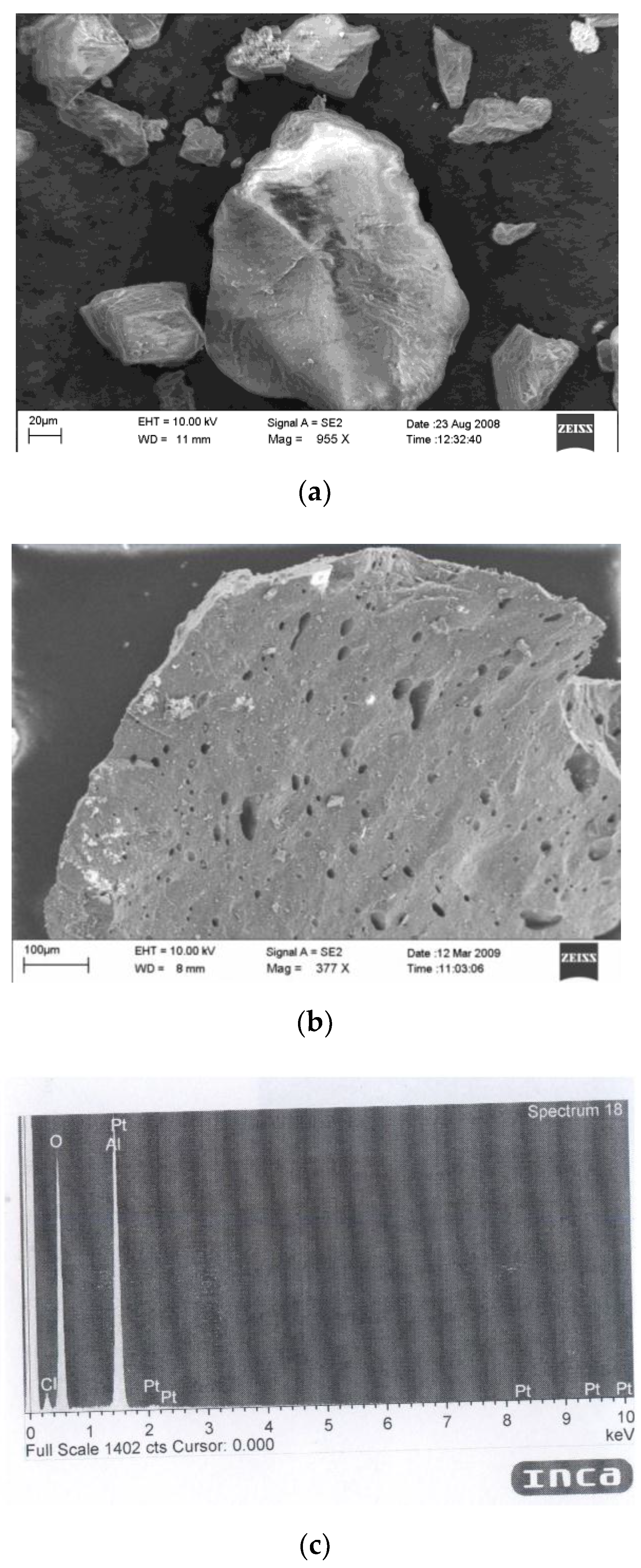
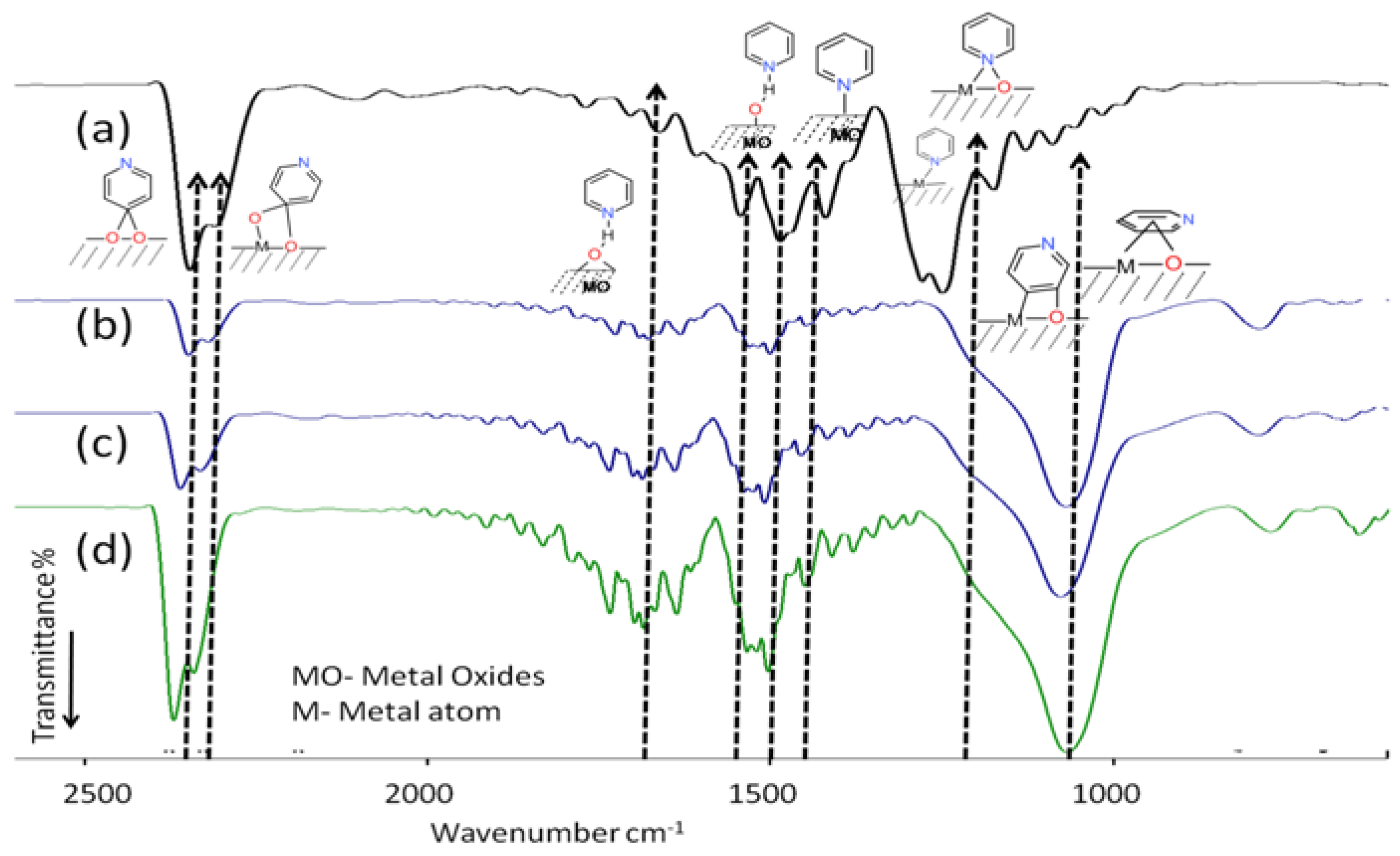
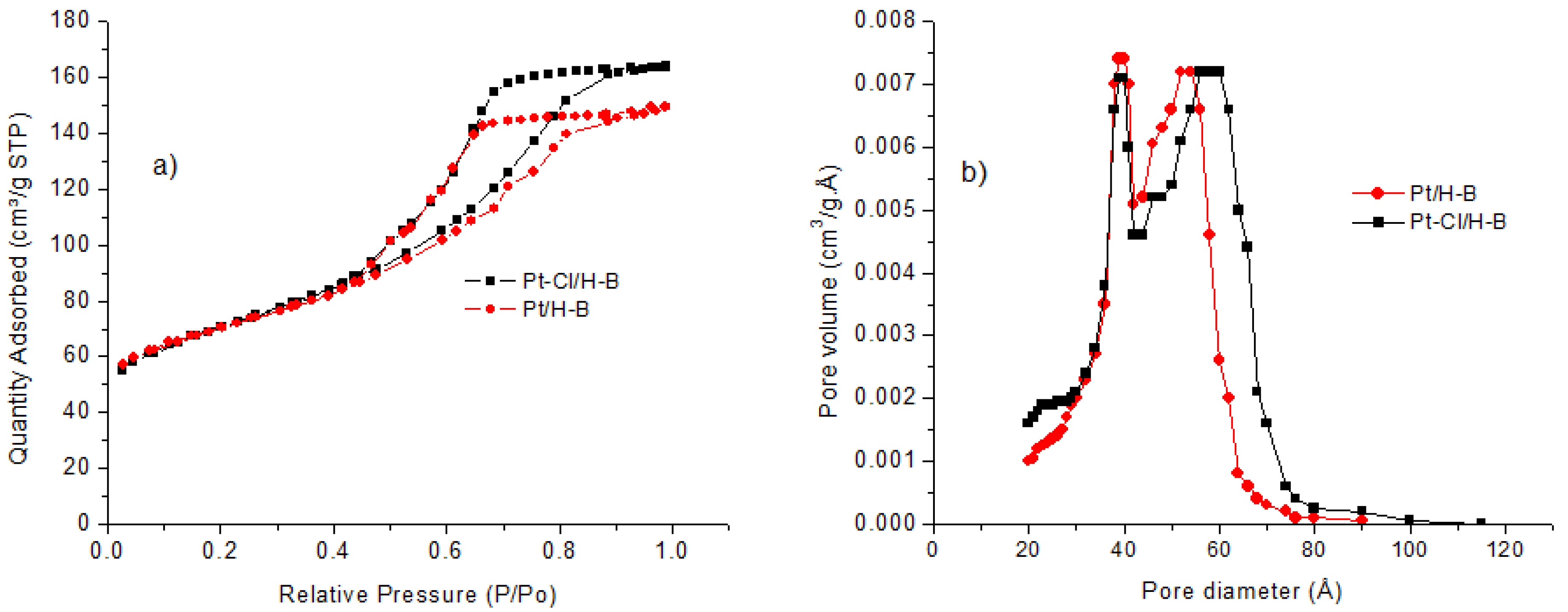

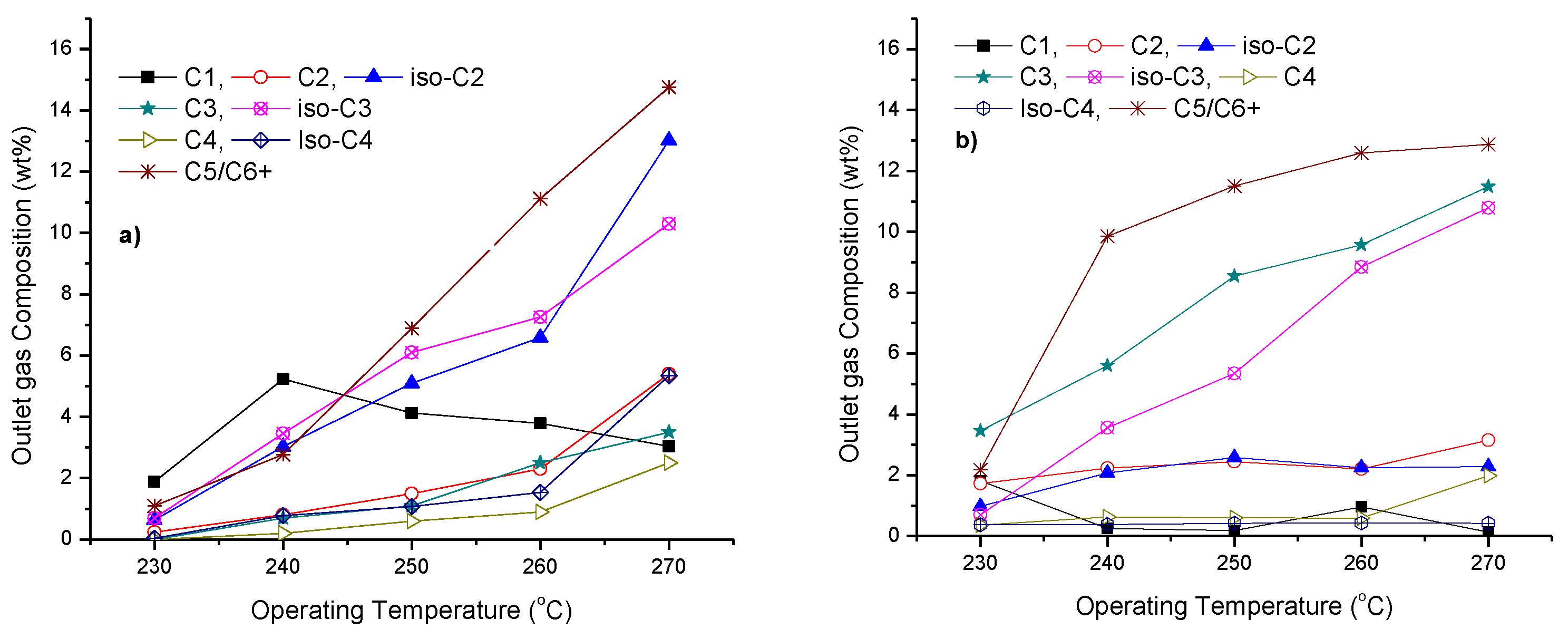
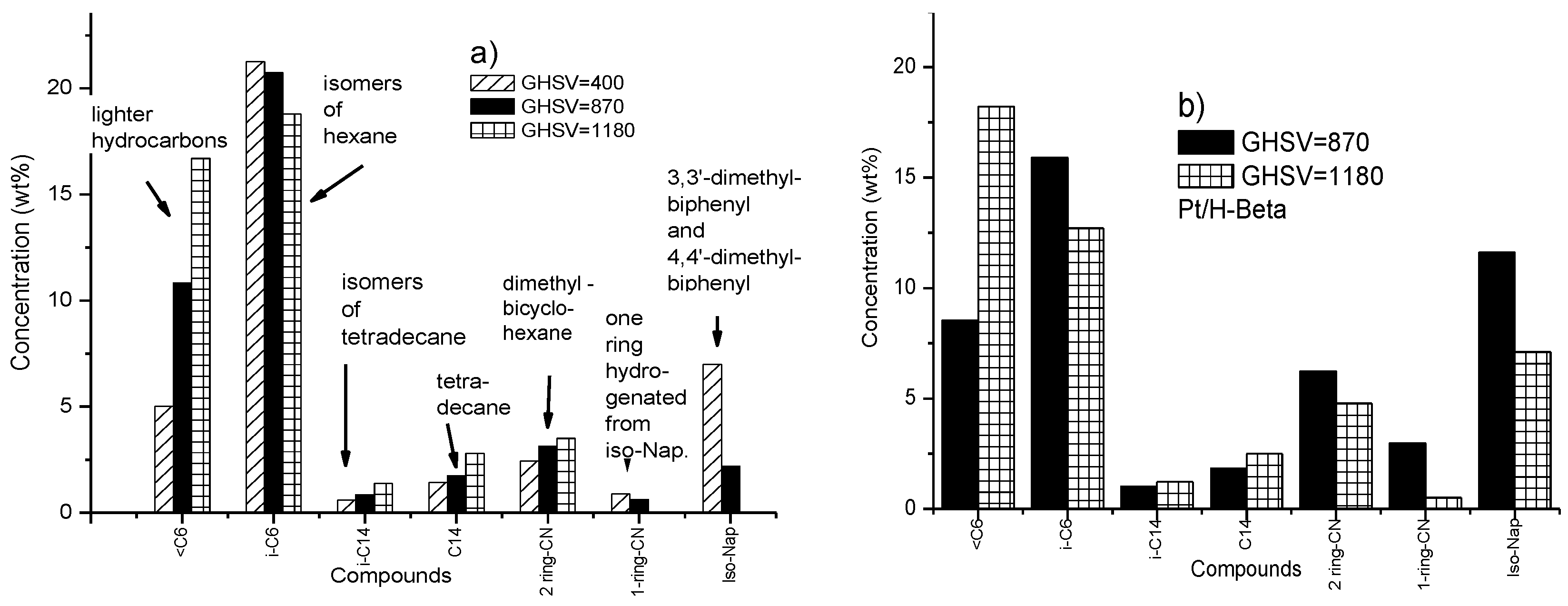

| Parameters | Hydrotreated FAME in Gas Oil (ULSD) | Conventional Diesel (LGO) | Reference Test Method * |
|---|---|---|---|
| Compositions | |||
| Aromatic (mono-) (% v/v) | 9.9 | 5.0 | IP 391 |
| Aromatic (di-) (% v/v) | 0.2 | 0.1 | IP 391 |
| PAH (tri+) (% v/v)# | <0.02 | <0.02 | IP 391 |
| Liquid Paraffins (wt%) | |||
| Gasoline fraction (<195 °C) | 0.6 | 0 | |
| Diesel fraction (195-300 °C) | 93.2 | 98 | |
| Heavy Fraction (>300 °C) | 6.2 | 2.1 | |
| Distillation temperature v/v rec. (°C)(SIM-DIST) | |||
| IBP | 176 | 196 | ASTM D86 |
| Dist: Temp. at 10% v/v | 195 | 216 | ASTM D86 |
| Dist: Temp. at 50% v/v | 202 | 237 | ASTM D86 |
| Dist: Temp. at 65% v/v | 231 | 245 | ASTM D86 |
| Dist: Temp. at 90% v/v | 259 | 272 | ASTM D86 |
| Dist: Temp. at 95% v/v | 289 | 384 | ASTM D86 |
| FBP | 303 | 295 | ASTM D86 |
| Other Properties | |||
| Cloud point (°C) | −32 | −34 | EN ISO 23015:1994 |
| Viscosity at 40 °C (mm2/s) | 2.083 | 1.909 | EN ISO 3104 |
| Density at 15 °C (kg/m3) | 820.6 | 821.2 | ASTM D4052-09 |
| Cetane Index | 51.86 | 51 | ASTM D 4737 |
| Nitrogen content (mg/kg) | <1 | <1 | ASTM D 4629 |
| Sulphur content (mg/kg) | <1 | <1 | EN ISO 8754 |
| Material | Surface Area (m²/g) | Micropore Area (m²/g) | Total Pore Volume (cm³/g) | Micropore Volume (cm³/g) | Avg. Pore Width (Å) | Adsorption Avg. Pore Diameter 1 (Å) | Desorption Avg. Pore Diameter 2 (Å) | Coke db 3 (ASTM D5373) |
|---|---|---|---|---|---|---|---|---|
| H-β # | 461.4 | 295.8 | 0.36 | 0.13 | 31.5 | 58.2 | 54.1 | ** |
| Pt/H-β | 244.2 | 105.0 | 0.21 | 0.05 | 41.2 | 49.9 | 43.3 | 2.4@ |
| Pt-Cl/H-β | 248.4 | 87.5 | 0.23 | 0.04 | 40.8 | 51.4 | 46.3 | 0.1 |
| Spent Pt-Cl/H-β | 186.3 | 83.1 | 0.16 | 0.023 | 26.4 | 44.6 | 41.1 | 2.0@ |
| Spectrum Identity (wt%) | H-β Extruder | Pt-Cl/H-β | Pt/H-β | |
|---|---|---|---|---|
| Top View | Top View | Segmented View | Top View | |
| O | 52.83 | 47.32 | 49.31 | 52.97 |
| Al | 32.67 | 31.74 | 30.76 | 32.69 |
| Si | 12.83 | 18.24 | 17.24 | 13.29 |
| Cl | 1.67 | 0.67 | 0.58 | ** |
| Pt | ** | 2.03 | 2.11 | 2.05 |
| SiO2/Al2O3 (mol%)# | 0.5 | 0.73 | 0.71 | 0.52 |
| Parameters | 10 H-ULSD | P (MPa) at T (°C) = 240 °C and LHSV = 1.0 h−1 | T (°C) at LHSV = 0.5 h−1 and P = 5 Mpa | ||||||||
| 4.0 | 4.5 | 5.0 | 5.5 | 6.5 | 230 | 240 | 250 | 260 | 270 | ||
| Aromatic (mono-) (% v/v) | 8.8 | ** | 4.5 | 3.8 | ** | 3.3 | 5.6 | 4.9 | 2.2 | <0.1 | <0.1 |
| Aromatic (di-) (% v/v) | 0.2 | ** | 0.1 | 0.1 | ** | 0.1 | 0.2 | 0.1 | 0.1 | <0.1 | <0.1 |
| PAH (tri+) (% v/v)# | <0.02 | ** | <0.02 | <0.02 | ** | <0.02 | <0.02 | <0.02 | <0.02 | <0.02 | <0.02 |
| Liquid Products in Boiling Point Range (Temperature in °C) (wt%) | |||||||||||
| Gasoline fraction (<195) | 11.1 | 12.7 | 14.8 | 15.1 | 15.8 | 17.3 | 11.8 | 16.4 | 26 | 38.7 | 47.6 |
| Diesel fraction (195–300) | 85.8 | 85.6 | 83.3 | 83.2 | 82.5 | 81.4 | 83 | 82.7 | 74 | 61.4 | 52.4 |
| Heavy Fraction (>300) | 3.1 | 1.8 | 1.8 | 1.7 | 1.7 | 1.3 | 5.2 | 0.9 | 0 | 0 | 0 |
| Distillation Temperature v/v Recovery (°C) (SIM-DIST) | |||||||||||
| IBP | 182 | 183 | ** | 180 | 189 | 189 | 179 | 178 | 177 | 175 | 175 |
| 10% v/v | 191 | 188 | ** | 194 | 196 | 199 | 187 | 187 | 186 | 185 | 185 |
| 50% v/v | 216 | 233 | ** | 234 | 237 | 238 | 231 | 231 | 233 | 235 | 235 |
| 65% v/v | 237 | 249 | ** | 251 | 261 | 270 | 248 | 248 | 247 | 248 | 265 |
| 90% v/v | 245 | 276 | ** | 275 | 280 | 283 | 276 | 276 | 274 | 274 | 273 |
| 95% v/v | 289 | 283 | ** | 287 | 285 | 288 | 285 | 289 | 285 | 282 | 280 |
| FBP | 309 | 306 | ** | 301 | 295 | 290 | 302 | 299 | 296 | 291 | 290 |
| Other Properties for Distilled Product | |||||||||||
| Cloud point (°C) | 1 | −24 | −21 | −20 | −20 | −22 | −20 | −25 | −32 | −34 | −35 |
| Viscosity at 40 °C (mm2/s) | 2.1 | 2.0 | 2.0 | 1.9 | 1.9 | 1.9 | 2.0 | 2.0 | 1.9 | 1.9 | 1.9 |
| Density at 15 °C (kg/m3) | 823.7 | 819.5 | 819.4 | 819.3 | 819 | 818.6 | 821.3 | 820.3 | 812.5 | 804 | 798 |
| Parameters | 10 H-ULSD | 10 H-ULSD | 10 H-ULSD | 10 H-ULSD +T * |
| LHSV (h−1) | - | 0.5 | 1 | 1 |
| Aromatic (mono-) (% v/v) | 8.8 | 7.5 | 7.4 | 10.4 |
| Aromatic (di-) (% v/v) | 0.2 | 3.2 | 0.3 | 0.4 |
| PAH (tri+) (% v/v)# | <0.02 | 0.08 | 0.03 | 0.02 |
| Liquid Products in Boiling Point Range (Temperature in °C) (wt%) | ||||
| <125 | 0.0 | 5.9 | 2.9 | 6.2 |
| 125–195 | 5.2 | 14.4 | 17 | 9.3 |
| 196–215 | 9.4 | 9.8 | 9.7 | 9.6 |
| 216–250 | 36.0 | 32.4 | 30.9 | 32.3 |
| 251–265 | 19.7 | 16.3 | 17.4 | 19.2 |
| 265–300 | 23.5 | 19.3 | 20 | 21.3 |
| Heavy Fraction | 6.2 | 1.9 | 2.1 | 2.1 |
| Other Properties for Distilled Product | ||||
| Cloud point (°C) | 1 | −21 | −14 | −20 |
| Viscosity at 40 °C (mm2/s) | 2.1 | 1.9 | 2 | 1.9 |
| Density at 15 °C (kg/m3) | 823.7 | 820.6 | 819.5 | 819.1 |
© 2019 by the authors. Licensee MDPI, Basel, Switzerland. This article is an open access article distributed under the terms and conditions of the Creative Commons Attribution (CC BY) license (http://creativecommons.org/licenses/by/4.0/).
Share and Cite
Palanisamy, S.; Gevert, B.S.; Sankaran, P.; Kandasamy, K. Produce Low Aromatic Contents with Enhanced Cold Properties of Hydrotreated Renewable Diesel Using Pt/Alumina-Beta-Zeolite: Reaction Path Studied via Monoaromatic Model Compound. Energies 2019, 12, 2853. https://doi.org/10.3390/en12152853
Palanisamy S, Gevert BS, Sankaran P, Kandasamy K. Produce Low Aromatic Contents with Enhanced Cold Properties of Hydrotreated Renewable Diesel Using Pt/Alumina-Beta-Zeolite: Reaction Path Studied via Monoaromatic Model Compound. Energies. 2019; 12(15):2853. https://doi.org/10.3390/en12152853
Chicago/Turabian StylePalanisamy, Shanmugam, Börje Sten Gevert, Pranav Sankaran, and Kannan Kandasamy. 2019. "Produce Low Aromatic Contents with Enhanced Cold Properties of Hydrotreated Renewable Diesel Using Pt/Alumina-Beta-Zeolite: Reaction Path Studied via Monoaromatic Model Compound" Energies 12, no. 15: 2853. https://doi.org/10.3390/en12152853






